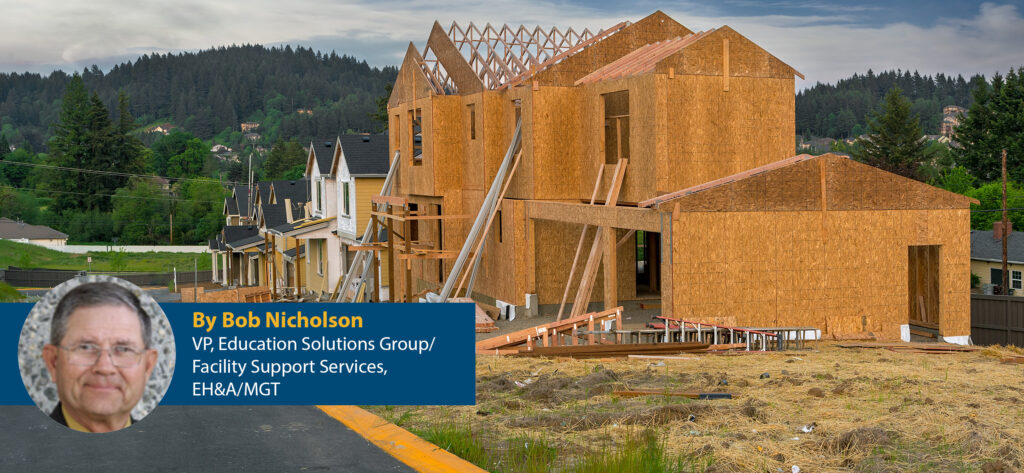
In part one of this multi-part series of articles, we discussed what to know and why to know about development impact fees. We discussed that development impact fees are NOT a tax but are, rather, one time charges applied to developments. We discussed why we need these fees and for what they are used. If you missed part one, you could find that article here. In our second part, we briefly discussed some of the history of developer fees for school facilities in California. In part three, we briefly discussed the three levels of fees.
In this article, we discuss some dos and don’ts of development impact fees. There are numerous sections within code related to this discussion. We will refer the reader to some specific sections of codes, including the Education Code (EC) and Government Code (GC). We will refer to specific code sections as appropriate to the topics.
WHO MAY PROTEST AND TIME FOR PROTEST OF DEVELOPER FEE
When fees are imposed, you are required to provide written notice to developers that a 90-day protest period has begun. The developer pays the fee and then files the protest within 90 days of notice. The developer must then file, within 180 day following delivery of notice, their challenge to the imposition of the fee. The developer must pay the fee and state the fee is paid under protest based on district requirements. It is highly encouraged that you include language in your compliance forms to help the developer understand this process. Including a statement such as this will address this requirement: “You have ninety (90) days from when you pay your fee to file a protest of the imposed fees pursuant to GC 66020. There are additional legal actions related to this process. EC 17621, (e)(2) provides additional information regarding a board established process for commercial or industrial developments appeal of the imposed fees. No appeal process is required for residential developments. The reader is encouraged to discuss protest and appeal with legal counsel.
OTHER CONSIDERATIONS
Collecting development fees for Hotels, Mobile Homes, Senior housing, Greenhouses, and Replacement Projects required consideration when establishing the “Nexus” for the imposed fee and the development project. This type of development may require additional consideration. Residential and commercial/industrial developments are calculated within the study while these “other” projects listed in the first sentence may require project-by-project consideration. Check with legal counsel if there are concerns or questions related to these types of projects.
EXEMPTIONS FROM FEES
Some projects will be exempt from development fees. Most notably, residential additions of 500 square feet are exempt. That said, if the addition exceeds 500 square feet, the fee is levied on the entire addition. Up to or less that 500 square feet of residential addition is exempt. Accessory Dwelling Units (ADU’s) under 750 square feet may be exempt and here again, this would be best discussed with legal counsel to ensure understanding.
Modifications for severe or permanent disabilities access at an existing residential house is exempt from the development impact fee. See EC 17620 (a)(1)(C)(ii) for more information and clarification.
If residential property is damaged or destroyed by a natural disaster such as fire, flood, hurricane, or earthquake and the replacement structure is the same square footage as the original structure, it is exempt from imposition of the fee. If any new square footage is added, the added square footage is subject to imposition of the fee. See EC 17626 for more information.
Religious purpose facilities are exempt from fee as ae private full-time day schools (K-12), government owned facilities, and housing for migrant farm workers. See GC 65995 (d) and Health and Safety Code 50710 for more information on state-owned housing for migrant farm workers.
Non-unified districts cannot collect fees higher than level 1 fee (statutory fee) where there is overlap between collecting the fee within the boundaries of the districts. This requires districts to enter into agreements stating the “share” of fee between the entities. Note there is a requirement to send this agreement to the State Allocation Board (SAB) per EC 17623. Refunds of fees can be found in EC 17624. The reader is encouraged to discuss these provisions with legal counsel.
USE OF FEE
Developer fees can be used to construct and reconstruct facilities, pay for studies and needs analysis, and the process for adopting the fee. 3% of the collected fees can be used for the administration and collection of the fees. Meetings required to levy or increase the existing fee may also be recovered by the district. Facilities in need of improvement for maintenance of the existing level of service and/or to comply with the districts Facilities Master Plan are also allowed. See GC 65995.5, 66016, 66001, and EC 17620 for additional information on the permissible uses of collected fees.
Fees cannot be used for regular or routine maintenance, various types of inspections, abatement of asbestos, except where it is within a construction or reconstruction project as stated previously. EC 17582 describes non-allowed use of the fee for deferred maintenance. See this section for additional information.
Our next article will focus on adopting and increasing the fees. We will provide more information on what your Developer Fee Justification Study should include as well as what steps need to be completed before implementing the fee.


